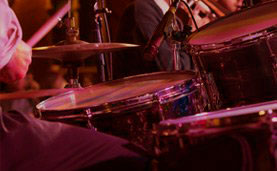Sammy Hagar Talks Jesus, Aliens, and the ’70s Prog Album He Never Got to Make

Society of Rock
Sammy Hagar has lived several musical lives, yet each chapter carries the same restless spark. Long before he became the voice that helped Van Halen soar into its second era, he had already carved a reputation as the powerhouse who drove Montrose into the hard-rock conversation. Later came the solo hits, business ventures, and a tequila empire that made him a fortune. Through it all, he remained one of rock’s most energetic frontmen—a guy who always seems to be running toward the next idea.
But buried beneath the familiar chapters of his story is a strange and fascinating thread that never quite got its moment. In the mid-’70s, right after his split from Montrose, Hagar dreamed of stepping away from straight-ahead rock and building something closer to Pink Floyd’s vast, conceptual universe. What he had in mind wasn’t just a stylistic shift; it was a full-blown sci-fi opera about creation, consciousness, and extraterrestrial life.
Most fans only know him as the extroverted Red Rocker, but inside the mind of young Sammy was a different world—a prog album that tied together Jesus, aliens, and the birth of the universe. The project never came to life the way he intended, but its remnants still pulse through his early solo work and even into the music he made with Van Halen.
The Lost Prog Album – Sammy Wilde and the Dustcloud
After being fired from Montrose in 1975, Hagar was convinced it was his chance to reinvent himself. Influenced heavily by Dark Side of the Moon, he started sketching out a concept record drenched in outer-space themes, cosmic symbolism, and progressive arrangements. He envisioned a protagonist named Sammy Wilde, the leader of a fictional band called Dustcloud—a reference to the birth of a star. It wasn’t supposed to be a gimmick. He genuinely wanted to enter the world of theatrical storytelling in the same way David Bowie did with Ziggy Stardust.
Hagar went all-in. He formed a lineup, rehearsed the material, and even debuted live under the Sammy Wilde and Dustcloud name. But the grand debut didn’t match the scale of his ideas. The venue could fit thousands; only a few hundred showed up. More than that, his label at the time had no appetite for cosmic narratives or Stage-2 Pink Floyd ambitions. MCA pushed him toward a more conventional path, weary of backing a concept album about aliens, Jesus returning in a spaceship, and a world teetering on a cosmic divide.
Still, Hagar didn’t let the songs disappear. Tracks like “Silver Lights,” “Hot Rocks,” and “Crack in the World” were absorbed into his early solo releases, sometimes renamed, sometimes lyrically altered, but unmistakably rooted in his original sci-fi blueprint. Those songs are the only surviving pieces of a larger world he never stopped imagining.
Aliens, Consciousness, and the Mind of Sammy Hagar
Hagar’s fascination with extraterrestrial life isn’t a persona or a story he tells for fun. It runs deep into his personal mythology. In his memoir Red: My Uncensored Life in Rock, he described an alleged encounter from his teenage years—an experience he insists was real. According to him, the beings “tapped into my mind” through a kind of wireless connection. To this day, he calls anyone who believes humans are alone in the universe “the crazy people.”
That belief found its way into his music early. Montrose tracks like “Space Station #5” and “Spaceage Sacrifice” were stepping stones toward the bigger concept he wanted to realize after leaving the band. Even his publishing company, Big Bang Music, reflected his obsession with origins, cosmic explosions, and the mechanics of creation. The themes weren’t hobby-level curiosities; they were the framework for how he saw the universe.
His interest eventually crept into Van Halen as well. “Love Walks In” may sound like a romantic power ballad, but he’s always been open about its other layer: walk-ins, alien consciousness, and the idea that contact can reshape a life in an instant. When he says, “It’s all in there,” he means it literally.
Why Sammy Still Believes the Album Meant Something
Although the Sammy Wilde album never took shape, the ideas behind it never left him. Hagar talks about consciousness as if he’s piecing together a map of the multiverse—dimensions layered on top of one another, each with its own kind of awareness. To him, humans operate in the third dimension but think in the fourth. Figures like Jesus, he believes, exist in the fifth. And the creative force behind everything—a higher intelligence he loosely calls God—resides in the ninth.
This worldview explains why the abandoned project remains important in his personal lore. It wasn’t meant to be a fictional rock opera; it was his attempt to explain, through music, how he sees existence working. The aliens, the cosmic birth imagery, the spiritual symbolism—these weren’t props. They were his way of making sense of a universe he believes is full of life and layered consciousness.
And maybe that’s why the story of the lost album still resonates. Even without a finished concept record, the fragments left behind feel like clues to a version of Sammy Hagar the world never fully met—a younger, more experimental artist chasing a vision that didn’t neatly fit the rock landscape of the 1970s. It remains one of the great “what ifs” in his sprawling career, a reminder that even the loudest rock star can carry a quiet, cosmic dream.












